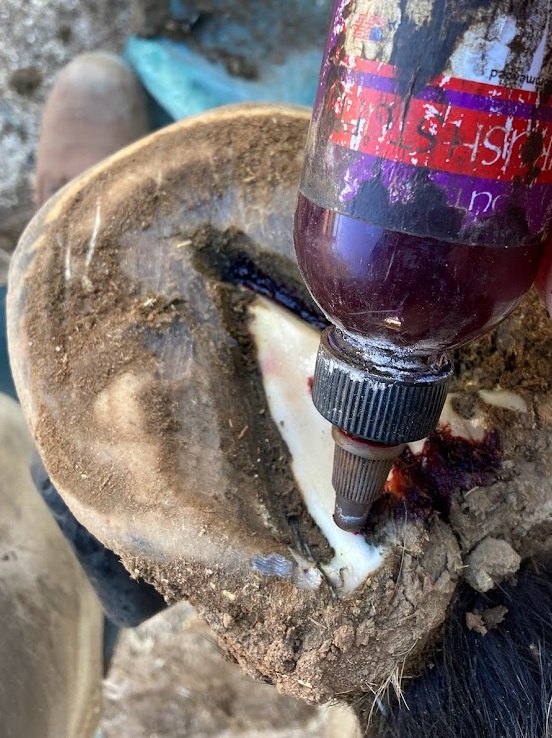Thrush in Horse Hooves: Equine Care


If you have horses, chances are you’ll see thrush firsthand sooner or later. Thrush is a bacterial infection, though it’s thought that yeast and fungal infections might also contribute to it. Thrush can lead to infected frogs in horses.
With its black, tar-like, odoriferous discharge, it’s easy to spot – and smell – as you clean the sulci (grooves) along the sides of the frog. The sulci may also look deeper than normal if thrush has set in.
If the infection has penetrated sensitive tissues, the horse infection of the frog may make the horse to be a little “off” or lame. When horses living in an unclean, or small stall, or small paddock the thrush can grow quickly and so it’s important to clean the horse’s environment regularly.
In severe cases, and lameness for the horse, preventative care is paramount. In that said, if caught early, thrush is usually quite easy to treat and resolve. One horse thrush treatment we recommend is Thrush Stuff that is a thrush specific tropical treatment.

If left for a period of time, thrush infections will not only eat away the frog, but it can penetrate the sole and white lining of the hoof and then work its way into vital structures. Another incentive for finding and treating thrush early is that once the infection enters the lower areas of the frog, it can be difficult to cure because topical treatments can’t reach all the deep nooks and crannies without cleaning the frog, doing a good trimming of the hoof, and then regularly applying a thrush specific remedy.
While thrush is most often seen in horses that must stand in mud and wet conditions, it’s also found in horses with a dry stabling and even in dry environments. It can occur when flaps of the frog grow over the sulci and trap dirt and moisture. Horses with contracted heels can be prone to thrush because their hoof conformation narrows the sulci so dirt can manure aren’t as easily dislodged.
Prevention of Thrush for Horses
- Daily hoof picking is a key to preventing thrush. Be sure to really clean out the sulci, grooves along the frog, rather than just picking out the sole.
- Regular exercise contributes to overall hoof quality by increasing circulation.
- A clean, dry environment helps prevent the bacteria that cause thrush.
Treatment of Thrush for Horses
Trim the frog. Have your farrier evaluate your horse’s hooves to prevent and begin treatment for thrush. If the frog is overgrown, the farrier will trim it to reduce the infected parts of the frog and allow for air to circulate better around the frog. If the frog isn’t trimmed first, talk to your vet or farrier to schedule a trimming.
Clean the hoof. After the frog is trimmed, scrub the entire foot with a stiff brush and warm water. Allow the foot to dry completely before applying a thrush specific topical treatment product like Thrush Stuff.
Apply Thrush Stuff remedies for thrush in horses hooves. Any tack store or catalog should offer the Thrush Stuff product. Ask your vet for his or her advice on what works best in your area and given your particular conditions.